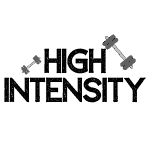Bodybuilding is a sport based usually in intense physical activity, usually anaerobic, consisting of the most times in the training with weight, an activity that is usually done in gyms, and whose purpose is usually to obtain a body more defined, bulky, and provided muscularly as possible. Also commonly called bodybuilding, or bodybuilding, and should not be confused with weightlifting or with athletics.
History of bodybuilding
This sport has its first manifestations in figures of cave paintings that already used weights of hands to perform jumps or exercises to increase their strength. These are behaviors aimed primarily at the development of force or its size, with the objective of survival as a clear purpose.
His first historical references can are in Classical Greece, where the human body obtained a cultural relevance that has reached today. The bodybuilder or athlete muscularly, we can observe it in multiple representations, Hercules, Laocoon, friezes with warriors, etc.
The word “bodybuilding” comes from French to designate this sport that took place in France in the 17th and 19th centuries as the place and dates of birth of a sports discipline that aimed at Aesthetics, a word that directly fits with the physical culture, that is, bodybuilding that we know today for its Sport variant of competition mainly.
Introduction
For its practitioners, ‘ bodybuilding is a lifestyle that analyzing it under the aspect of maintaining a habit of living based on physical exercise and a healthy diet, which can be very healthy.
During the years that bodybuilding spread to Europe and the United States, in the forties and fifties,, there was a large number of practitioners anonymous, for which health and welfare were significant objectives. So, with hardly any knowledge of diets or training principles, acquiring large muscle masses was complicated. However, Extreme Bodybuilding can degenerate into major but rare psychopathological disorders, such as musculoskeletal disorders or bigorexia.
Bodybuilding is the process of developing muscle fibers by combining weight lifting, increased caloric intake, and rest.
To achieve extraordinary muscle development, bodybuilders must concentrate on three basic lines of action:
- Weight lifting against resistance: weight training causes damage to the muscles. This is known as microtrauma. These small muscle injuries contribute to the fatigue experienced after exercise. Microgram repair is part of muscle growth (hypertrophy). For bodybuilding training, series-and repeat-based training routines are normally used.
- A high-quality diet incorporating additional proteins: growth and repair, however, cannot happen without adequate nutrition. A bodybuilder has higher protein requirements than a sedentary person to repair the damage caused by weight training. In addition to proteins, carbohydrates are essential for energy input during training. The proportions usually recommended at the nutritional level are:
- 60% carbohydrates
- 30% protein
- 10% fat
An appropriate break to facilitate growth. Without proper rest and sleep, the body does not find an opportunity to rebuild and repair damaged fibers. It takes at least eight hours of rest for a bodybuilder to find himself in good condition in the next training session.
Competition
Bodybuilders perform poses in front of a jury, which assigns scores and awards titles such as Mister Universe or Mister Olympia. The bodybuilding competition is divided into two rounds, the first, known as precomputation or semifinals, in which four symmetry poses and seven mandatory muscular poses are performed to determine the degree of development, definition, size, symmetry, proportions, in addition to the aesthetics to settle scores. The second part is called Final or competition, between 5 and 6 finalists each have a minute of music to perform a choreography of Free poses. After the two rounds, a total score is offered.
Female Bodybuilding
Although in its beginnings, it was a sport exclusively for men, in the decade of the eighties began to emerge competitions female.
In some countries, women who practice bodybuilding tend to provoke an inevitable social rejection, due to cultural preconceptions about femininity. This led to an evolution of female bodybuilding and the emergence of new modalities where female forms are given greater relevance than the size and definition itself. That is, closer to the image of femininity that society usually understands as acceptable. These modalities are the recent Body fitness or figures and Fitness, in which competitors also demonstrate physical and choreographic skills. A good figure and a well-defined body.
Doping
Although no federation encourages its use and its distribution and marketing is heavily regulated, the majority of the competitors (practice widespread in all of the professional sports) and some bodybuilders and amateurs use drugs to significantly increase your muscle mass, your physical performance, and your muscle definition.
Of these, the most commonly used are synthetic hormones commonly known as anabolic steroids or only steroids. In addition to these, other types of dopant drugs such as diuretics, insulin, growth hormone, Erythropoietin, gonadotropic hormone analogs, psychostimulants, sympathomimetics, etc. are commonly used.
As they are used in healthy individuals and doses generally higher than therapeutic doses, the abuse of these drugs causes adverse side effects at the bone, immunological, cardiovascular, hormonal, and psychological levels.
